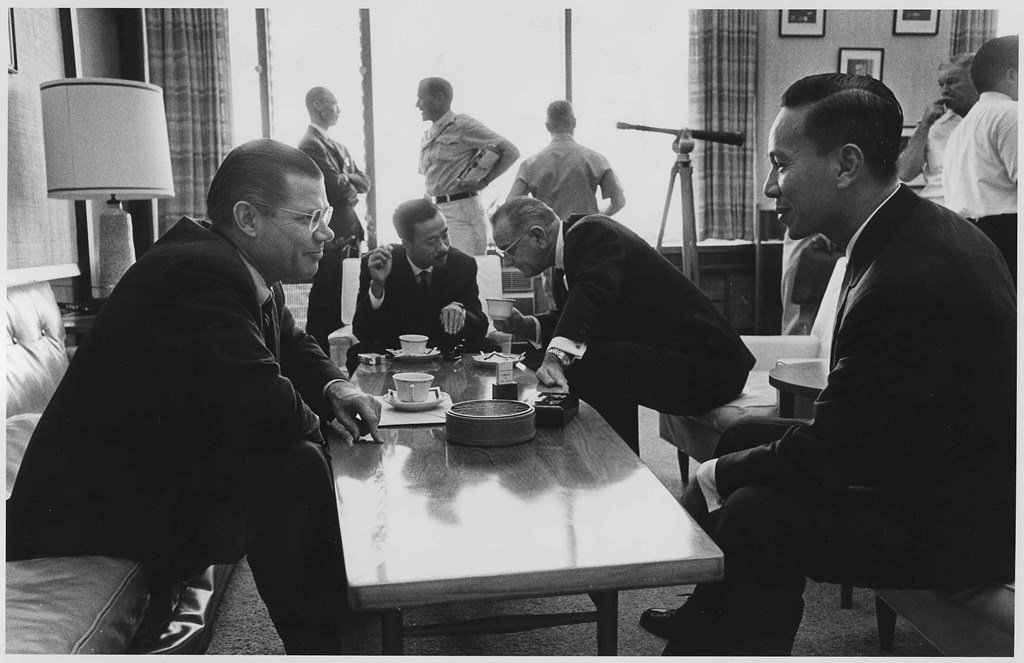1966 Honolulu Conference
January 17, 1966

From January 17 to February 9, over 400 staff officers and civilians from the United States and South Vietnam gather in Honolulu, Hawaii, to discuss strategy in Vietnam. Attendees include U.S. Secretary of Defense Robert S. McNamara, U.S. Secretary of State Dean Rusk, MACV commander General William C. Westmoreland, South Vietnamese Prime Minister Nguyen Cao Ky, and South Vietnamese Chief of State Nguyen Van Thieu. Representatives from the U.S. Joint Chiefs of Staff and U.S. Pacific Command also attend. President Lyndon B. Johnson arrives on February 7.
President Johnson emphasizes that they must spend more effort on what some call the “other war” of pacification and political, social, and economic reform in South Vietnam. General Westmoreland agrees that pacification is vital, but argues that their first priority must be the destruction of the North Vietnamese Army and the Viet Cong insurgency before pacification can be successful.
The Johnson administration presses U.S. and South Vietnamese leaders to expedite reform programs aimed at fighting Communist influence in the countryside. It assigns MACV to bring 60 percent of the South’s population under protection before the end of the year, among other quantitative goals. Secretaries McNamara and Rusk, along with the representatives of the Joint Chiefs and Pacific Command, concur with General Westmoreland’s view that, for the time being, the priority must remain the defeat of Communist troops on the battlefield, and the administration promises Westmoreland more troops toward this goal. The decisions that emerge from the Honolulu Conference determine much about the course and conduct of the war for the coming two years.1